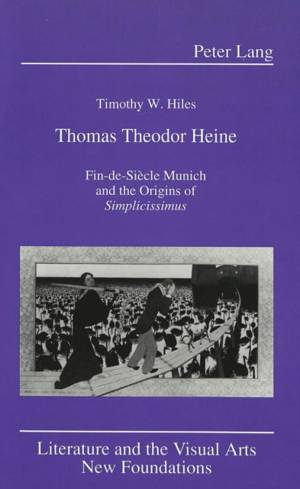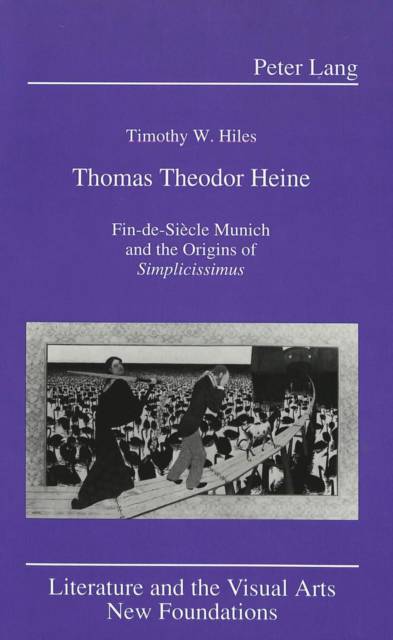
Je cadeautjes zeker op tijd in huis hebben voor de feestdagen? Kom langs in onze winkels en vind het perfecte geschenk!
- Afhalen na 1 uur in een winkel met voorraad
- Gratis thuislevering in België vanaf € 30
- Ruim aanbod met 7 miljoen producten
Je cadeautjes zeker op tijd in huis hebben voor de feestdagen? Kom langs in onze winkels en vind het perfecte geschenk!
- Afhalen na 1 uur in een winkel met voorraad
- Gratis thuislevering in België vanaf € 30
- Ruim aanbod met 7 miljoen producten
Zoeken
€ 73,45
+ 146 punten
Omschrijving
Thomas Theodor Heine (1867-1948) is recognized as one of Germany's most talented illustrators. His work on the magazines Fliegende Blätter and Simplicissimus is regarded as a perceptive and entertaining comment on the social and political issues which were to form the modern world. Less known are his paintings and writings, which provide an equally perceptive comment on the art world. This study explores Heine's early work as it relates to the exciting artistic atmosphere of fin-de-siècle Munich.
A complex intellectual, Heine often used his art for satirical comment. The key to this enigmatic satire is occasionally revealed to us through his autobiographical writings which are equally complex. Particularly insightful is his novel Ich warte auf Wunder (I Wait for Miracles), which the artist wrote while in exile from the Nazi regime in 1941. Throughout this entertaining adventure, a parody of Heine's life emerges through amusing anecdotes. In fact, it is through Heine's literary work that the intent of many previously puzzling paintings and illustrations is revealed to us. This investigation uncovers an artist who was aware of, and fully participated in, Naturalism, Symbolism, and Jugendstil. Often, Heine was at the very forefront of these movements, helping to introduce them to a city struggling to maintain its exuberant artistic environment. Through Heine's genius we are not only introduced to a talented painter and illustrator but also to the radiant art world of Munich at the turn of the century.
A complex intellectual, Heine often used his art for satirical comment. The key to this enigmatic satire is occasionally revealed to us through his autobiographical writings which are equally complex. Particularly insightful is his novel Ich warte auf Wunder (I Wait for Miracles), which the artist wrote while in exile from the Nazi regime in 1941. Throughout this entertaining adventure, a parody of Heine's life emerges through amusing anecdotes. In fact, it is through Heine's literary work that the intent of many previously puzzling paintings and illustrations is revealed to us. This investigation uncovers an artist who was aware of, and fully participated in, Naturalism, Symbolism, and Jugendstil. Often, Heine was at the very forefront of these movements, helping to introduce them to a city struggling to maintain its exuberant artistic environment. Through Heine's genius we are not only introduced to a talented painter and illustrator but also to the radiant art world of Munich at the turn of the century.
Specificaties
Betrokkenen
- Auteur(s):
- Uitgeverij:
Inhoud
- Aantal bladzijden:
- 242
- Taal:
- Engels
- Reeks:
- Reeksnummer:
- nr. 9
Eigenschappen
- Productcode (EAN):
- 9780820426891
- Verschijningsdatum:
- 1/04/1996
- Uitvoering:
- Hardcover
- Formaat:
- Genaaid
- Afmetingen:
- 160 mm x 230 mm
- Gewicht:
- 519 g

Alleen bij Standaard Boekhandel
+ 146 punten op je klantenkaart van Standaard Boekhandel
Beoordelingen
We publiceren alleen reviews die voldoen aan de voorwaarden voor reviews. Bekijk onze voorwaarden voor reviews.









